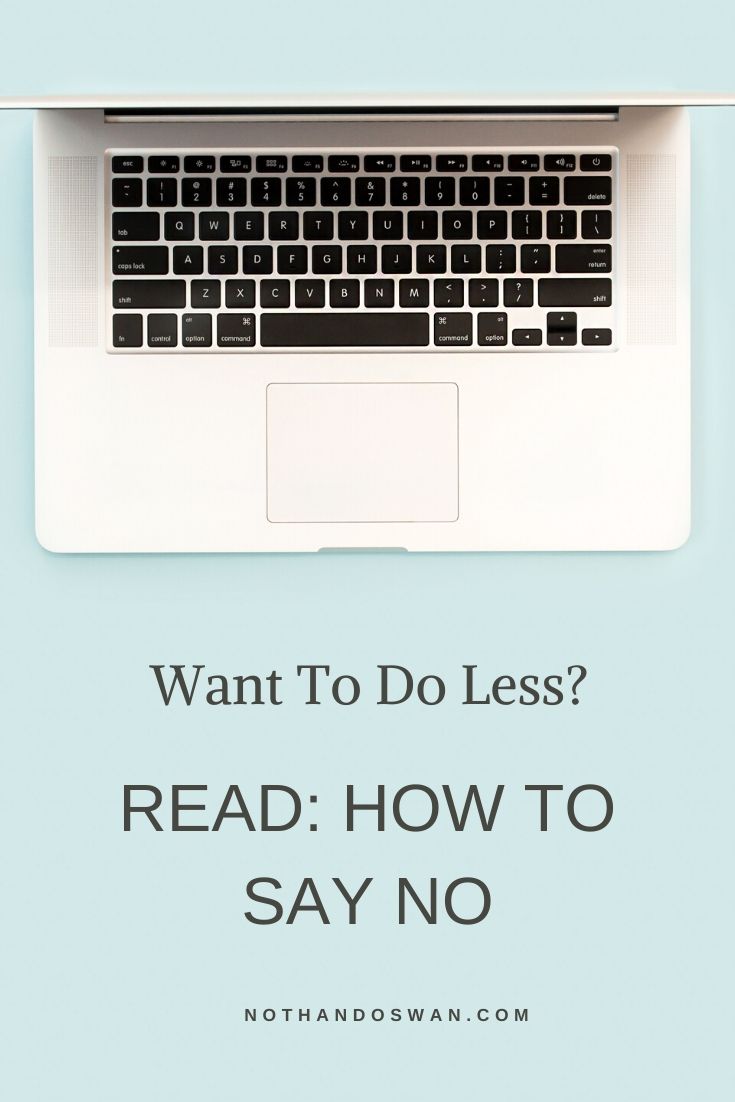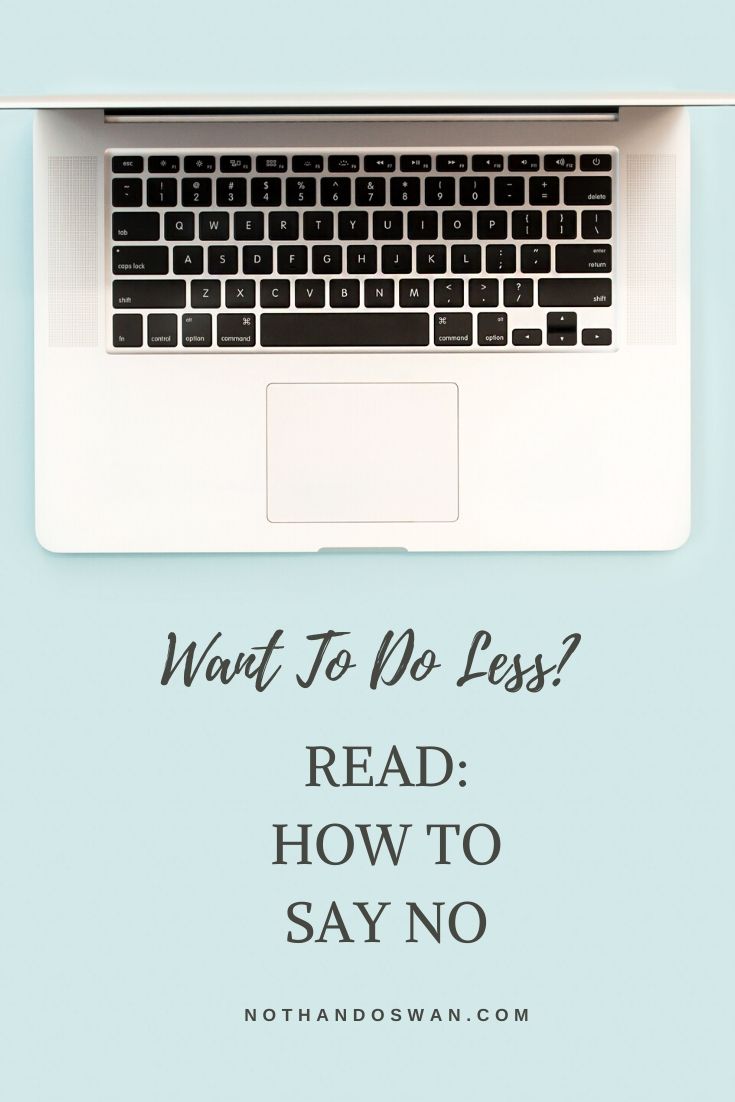Raise your hand if you secretly love it when people cancel plans. I think it’s every introvert’s guilty pleasure: getting to stay home instead of going out for… well, anything. But if you’re feeling like this, it might also be a clue that what you said “yes” to could have been a “no.”

In this post, we’re talking about how to say “no.” Because if we want to make time for our passions, we have to say “no” to things that take away from them. Here’s how:
Decide to do less
I hinted at this just now, but I’ll say it again. If you’re resenting having committed to something, then maybe it should have been a “no” in the first place.
That feeling of dread or gloom or complete I-don’t-want-to-do-this is important because it shows where you’re stretching yourself too thin.
Don’t get me wrong. There’s a difference between truly dreading something and just feeling tired or wishing you could laze around a bit more. Just because you’re not jumping out of bed at the crack of dawn doesn’t mean you’re not enthusiastic about your commitments. Sometimes, your sheets are just more attractive than the rest of the world is. And that’s okay.
But if you’re genuinely feeling unwell at the thought of doing something, acknowledge that feeling rather than suppressing it. Recognize your discomfort, and be honest about what that means for you.
When we make less space for these things we dread, we make more space for the things we love. It’s that simple. So when you decide that no, you’re not going to attend another lunchtime lecture, you suddenly have an hour to do something that is more fulFILLing (like just eat… see what I did there?).
We know this, so why don’t we say “no”?
Saying “no” or deciding to do less can be uncomfortable. I can’t tell you the number of times I’ve been in an awkward situation where someone’s asked if I “wanna hang out,” and I’ve said no.
Clearly, the natural response to “do you wanna” is meant to be “sure,” but sometimes, you really don’t wanna! It’s okay to politely decline an invitation. In fact, it’s better for everyone if you don’t go for that $5 coffee that your kidneys are just going to get rid of later.
Even though we know this, sometimes we say “yes” instead of “no” because:
- It’s uncomfortable
- We’re afraid to hurt people’s feelings
- We don’t want to seem rude
- We feel guilty, or
- We’re afraid to miss out
BUT
You can only miss out on things if your priorities aren’t clear
Saying “no” is a million times easier when you know what you’re saying “yes” to. Since there are so many things vying for our attention, it’s important to know what’s worth your time.
Start with what you’re passionate about. What do you feel is truly important in your life? And then, by extension, what kinds of things support that? Is it important that you work to support your creative dreams? Is it important that you don’t work more than x hours so you can spend time with your family?
Make a list of what you’re able to spend your energy on so that it’s easier for you to say no to everything else (you can do that with this free Focus Planner).
Because again, you can either look at “no” as an affront to others or as an affirmation to yourself.
“I’m saying no to you so that I can say yes to something that’s a priority for me.”
So how do we do less? How do we say no?
If we’re aware of our feelings and of our priorities, then saying no is simple with practice. Try these go-to scripts depending on the situation.
If you’re declining a work commitment, a “no” could like this:
“Thank you for thinking of me, however right now I’m working on [priorities x, y, and z] so I won’t be able to commit to that.”
In a social situation, a “no” could look like this:
“I’m so glad you invited me, but I can’t come.”
(Short and sweet. You don’t have to explain further.)
With family, a “no” could look like:
“I love you, and I hear your request, but I can’t do that right now.”
(You can finesse that one a bit more if you come from an immigrant family like I do.)
Try these on for size until you find the words that work for you. Essentially, saying “no” is about having your priorities clear and getting comfortable protecting them.
It’s also important to remember you are not responsible for people’s reactions to your “no.” Yes, it can be hard to sense someone’s disappointment, but it’s less about them and more about your own personal boundaries.
One last thing that I want to remind you is to follow through with your actions. How will you respond to repeated requests? How will you safely turn away? Saying “no” is the first step, but it’s your subsequent actions that firm up your decision.
Summary
Phewph. I feel like this post was a solid session of tough love. Was it helpful? (You can say “no”).
To recap, we spoke about why we don’t say “no”, what saying “no” requires, and how we can do it a bit more gracefully.
We also spoke about the notion that saying “no” can actually be kind: both to you and to the people around you. When you say “no” to something that you’re not passionate about, you’re making time for something that you are passionate about.
And remember: it’s important to stand by your “no.” Sometimes, you’ll get push back and that’s okay. You said what you said for a reason.
So, if you’re ready to say “yes” to your passions and stop prioritizing things that don’t matter, then fill out this free PDF so that you can be crystal clear on what’s a “yes” and what’s a hard “no.” I’ll see you in the next post!

